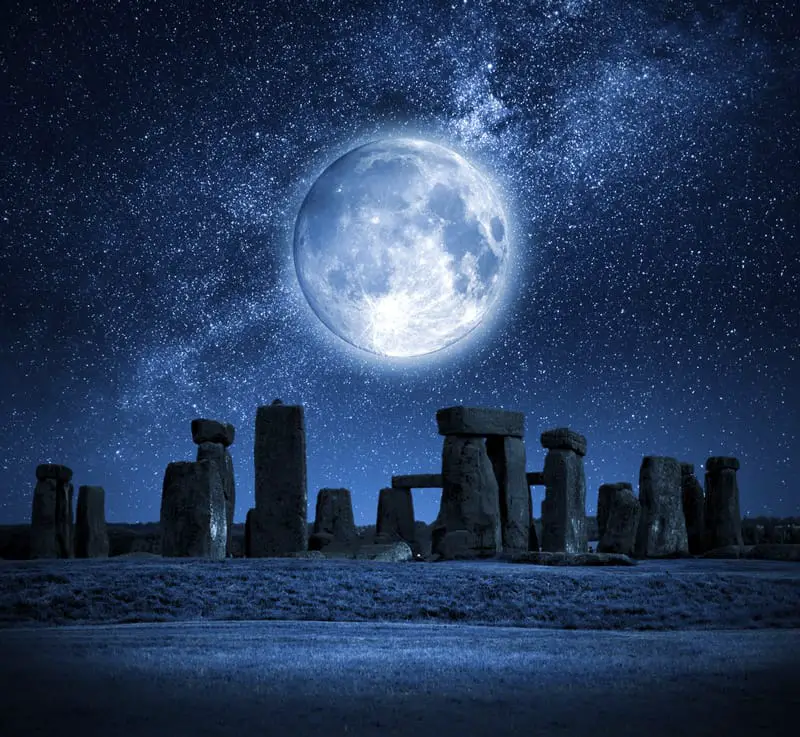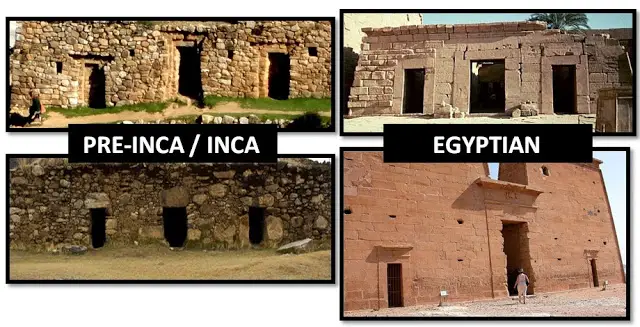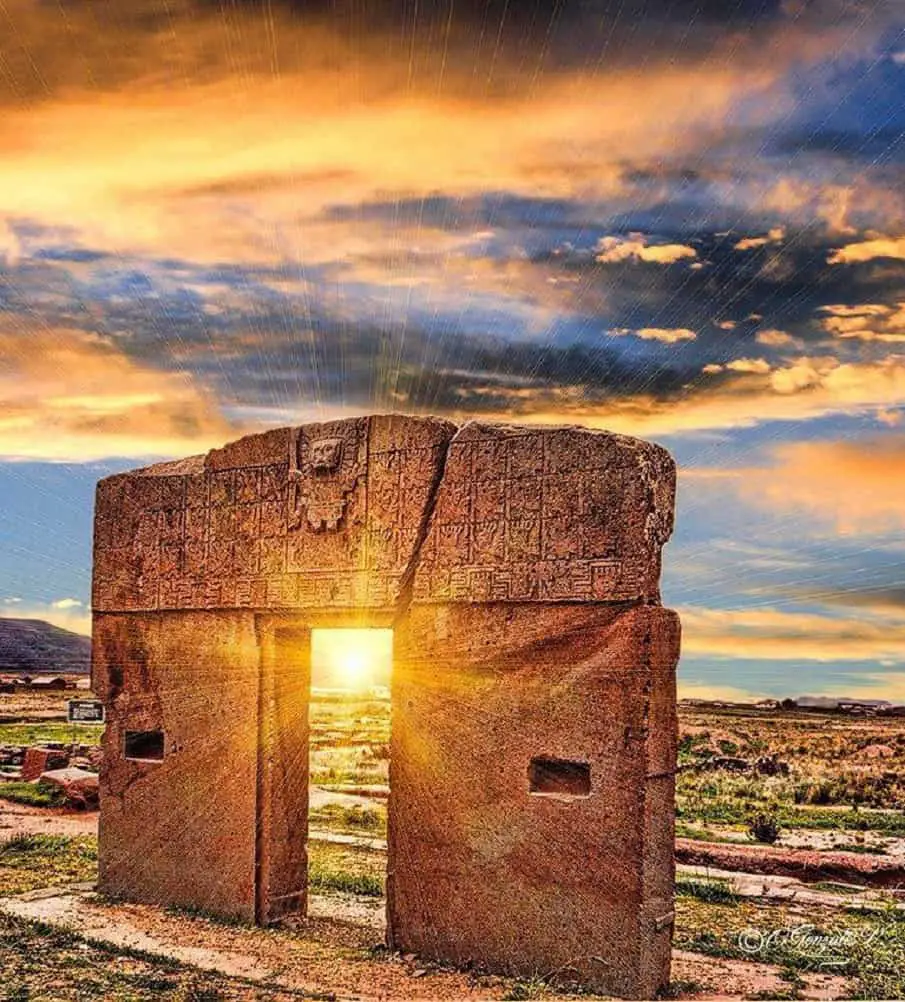Peru is a place of mythology, history, fascinating inexplicable monuments built long before the Inca and other dominant cultures, and a place filled with incredible mysteries that remain to this day unanswered.
Hidden away near the Sacred Valley of Peru are the ruins of Naupa Huaca, an ancient monument built with such precision that no one can explain how or why it was built.
If we travel not far from one of the most famous places in Peru—Sacred Valley—we find a curious cavern with a strange V-shaped entrance. Inside the cave, a curious rock-carved monument awaits almost as if someone used an extremely advanced ancient technology to manipulate the stone with ease, creating nearly perfect lines, sharp corners, and smooth surfaces. The result is a “False door” which, at least physically, does not lead anywhere. The finely carved “False door” is large enough for a person to sit in comfortably.
Who and why created these intricate designs in the stone is a mystery, but a greater one is most definitely the HOW.
Naupa Huaca features an incredible design that questions our entire knowledge about Andean civilizations and their ancestors. Just how were these incredible structures built? Why were they built in the first place? What type of technology was used? Did the ancients really use stones and wooden tools to carve nearly perfect shapes, smooth surfaces, and perfect lines? Or are we missing something?
Extreme precision. Image credit: Rinda Payne.
Naupa Huaca—an ancient place filled with mystery
The intricate design, smooth surfaces and laser-like cuts seen at Naupa Huaca are breathtaking. At an altitude of nearly 3000 feet above sea level, the ceiling floor of the cave entrance appears as if it was perfectly cut with laser-like tools in order to create two different angles, one of 60º and another one of 52º.
Curiously, as noted by Earth Matrix, some of the more commonly cited degrees of inclination, that is, the angle of rise of the faces of the pyramids to the horizon, of the pyramids of ancient Egypt, are: 52° (The Perfect Pyramid at Meidum); 51° 50′ or 51° 51′ 14″ (among others of The Great Pyramid of Khufu); 52° 20′ 00″0 (Second Pyramid of Giza); 51° (Third Pyramid of Giza); among many other distinct degrees of inclination for the pyramids throughout Egypt, which appear to range from 42° 59′ 26″ (Southern Stone Pyramid of Dashur) on up to 75° 20′ 0″ (Pyramid of Rigah).
Anyway, back to Naupa Huaca.
Naupa Huaca features more incredible details. Whoever decided to build this mystical places somehow picked out the exact point of the mountainside where there are traces of blue stone.
In clear contrast to the surrounding sandstone, the blue stone contains a type of crystal that has been used by early radio receivers thanks to its excellent piezoelectric properties. This rock also happens to be magnetic in nature.
What’s even more mind-boggling is the fact that if we travel half way around the world to the U.K. well come across Stonehenge and its magnificent, supermassive stones.
For some reason, “blue stones” were so important that the architects Stonehenge decided to transport them from a distance of more than 200 km away.

Researchers agree that the long-distance transport of the bluestones from Wales to Stonehenge is without a doubt, one of the most remarkable accomplishments of society thousands of years ago.
While many experts have several theories as to how ancient man managed to transport huge boulders across long distances, no one can say for certain how it was done, thousands of years ago, when society was at a very primitive stage according to researchers.
Furthermore, archaeologists have found evidence that the ‘bluestones’ were actually quarried 500 years before they were put into place in Wiltshire, prompting the theory that Stonehenge might actually be a second-hand monument’.
Diving into the mysteries of Naupa Huaca
If the fascinating characteristics of the stone structure aren’t interesting enough, and the perfect lines, sharp corners, and smooth surfaces don’t leave you intrigued, there are several other details that show just how mysterious Naupa Huaca actually is.
The enigmatic false door seems to have been sculpted on three different levels and the basaltic altar to its left has three exquisitely carved windows.
But why three?
To answer this we take a look at the work of author Richard Cassaro.
The author—which has published several books, see here—asks several thought-provoking questions.
Did the world’s first cultures inherit the same high wisdom from the same more ancient but now-vanished Mother Culture?
As noted by Richard, if we take a look at different pyramids and temples around the globe we will notice that ancient pyramid building cultures all built these Triptych—three door—Temples. Does this mean they shared the same religion?

Richard explains that just as the pyramids, the presence of these Triptych Temples worldwide throws enormous weight behind the “Atlantis” theory—the idea that civilization has much older roots than presently accepted by science; that there is a major forgotten episode in human history; that an advanced ancient culture once flourished but was destroyed in a cataclysm; and that history’s first known cultures were inheritors of its legacy.
So is it a coincidence that the false door at Naupa Huaca was sculpted on three different levels and the basaltic altar to its left has three exquisitely carved windows?
The mystery deepens.
If we travel to Machu Picchu—a 15th-century—citadel situated on a mountain ridge 2,430 meters above sea level—we find a curious structure referred to as the temple of the three windows. The temple is located at the southwestern corner of the main plaza. There we find an intricately built stone hall 35 feet long and 14 feet wide containing three trapezoidal windows along one wall, perhaps a rare feature in Inca architecture, but heavily present globally.

Curiously, according to Incan Mythology, the worlds that make up our universe are three: the world below (Ukhu pacha), our physical world (Kay pacha) and the world above (Hanaq pacha). The realms are not solely spatial but were simultaneously spatial and temporal. Although the universe was considered a unified system within Incan cosmology, the division between the worlds was part of the dualism prominent in Incan beliefs, known as Yanantin. This dualism found that everything which existed had both features of any feature (both hot and cold, positive and negative, dark and light, etc.).
Perhaps a great example of this is the so-called Gateway of the Sun, or “La Puerta del Sol” at Tiahauanco. This door is said to represent how all three ‘worlds’ are interconnected.
This ancient ‘portal’ was created out of a single Andesite block weighing approximately 10 tons and is around 9.8 ft. (3.0 m) tall and 13 ft. (4.0 m) wide. Some authors argue that it dates back to around 15,000 BC. It is believed that Tiahuanaco is one of the oldest cultures of South America, having survived from around 1500 B.C. until the year 1000 A.D
And if all of the above has still not caught your interest, the identity of the builders of Naupa Huaca are unknown to history. While Inca stonework is beyond admirable, the technique and precision present at Naupa Huaca seem incomparable to the scale and quality of the Inca.
Like many other ancient places in Peru, Naupa Huaca was most likely erected by a culture who vanished long before the Inca appeared, but made sure their legacy remained for future generations to see and left their history written in stone.
Reference:
ÑAUPA IGLESIA, A SECRET RUIN IN THE SACRED VALLEY
The Enigmatic Stone Temple In A Cave In Peru: Naupa Huaca
The Triptych Enigma: Freemasonry’s Forbidden Ancient “Universal Religion”
The intricate design, smooth surfaces and laser-like cuts seen at Naupa Huaca are breathtaking. At an altitude of nearly 3000 feet above sea level, the ceiling floor of the cave entrance appears as if it was perfectly cut with laser-like tools in order to create two different angles, one of 60º and another one of 52º.
Curiously, as noted by Earth Matrix, some of the more commonly cited degrees of inclination, that is, the angle of rise of the faces of the pyramids to the horizon, of the pyramids of ancient Egypt, are: 52° (The Perfect Pyramid at Meidum); 51° 50′ or 51° 51′ 14″ (among others of The Great Pyramid of Khufu); 52° 20′ 00″0 (Second Pyramid of Giza); 51° (Third Pyramid of Giza); among many other distinct degrees of inclination for the pyramids throughout Egypt, which appear to range from 42° 59′ 26″ (Southern Stone Pyramid of Dashur) on up to 75° 20′ 0″ (Pyramid of Rigah).
Anyway, back to Naupa Huaca.
Naupa Huaca features more incredible details. Whoever decided to build this mystical places somehow picked out the exact point of the mountainside where there are traces of blue stone.
In clear contrast to the surrounding sandstone, the blue stone contains a type of crystal that has been used by early radio receivers thanks to its excellent piezoelectric properties. This rock also happens to be magnetic in nature.
What’s even more mind-boggling is the fact that if we travel half way around the world to the U.K. well come across Stonehenge and its magnificent, supermassive stones.
For some reason, “blue stones” were so important that the architects Stonehenge decided to transport them from a distance of more than 200 km away.

Researchers agree that the long-distance transport of the bluestones from Wales to Stonehenge is without a doubt, one of the most remarkable accomplishments of society thousands of years ago.
While many experts have several theories as to how ancient man managed to transport huge boulders across long distances, no one can say for certain how it was done, thousands of years ago, when society was at a very primitive stage according to researchers.
Furthermore, archaeologists have found evidence that the ‘bluestones’ were actually quarried 500 years before they were put into place in Wiltshire, prompting the theory that Stonehenge might actually be a second-hand monument’.
Diving into the mysteries of Naupa Huaca
If the fascinating characteristics of the stone structure aren’t interesting enough, and the perfect lines, sharp corners, and smooth surfaces don’t leave you intrigued, there are several other details that show just how mysterious Naupa Huaca actually is.
The enigmatic false door seems to have been sculpted on three different levels and the basaltic altar to its left has three exquisitely carved windows.
But why three?
To answer this we take a look at the work of author Richard Cassaro.
The author—which has published several books, see here—asks several thought-provoking questions.
Did the world’s first cultures inherit the same high wisdom from the same more ancient but now-vanished Mother Culture?
As noted by Richard, if we take a look at different pyramids and temples around the globe we will notice that ancient pyramid building cultures all built these Triptych—three door—Temples. Does this mean they shared the same religion?

Richard explains that just as the pyramids, the presence of these Triptych Temples worldwide throws enormous weight behind the “Atlantis” theory—the idea that civilization has much older roots than presently accepted by science; that there is a major forgotten episode in human history; that an advanced ancient culture once flourished but was destroyed in a cataclysm; and that history’s first known cultures were inheritors of its legacy.
So is it a coincidence that the false door at Naupa Huaca was sculpted on three different levels and the basaltic altar to its left has three exquisitely carved windows?
The mystery deepens.
If we travel to Machu Picchu—a 15th-century—citadel situated on a mountain ridge 2,430 meters above sea level—we find a curious structure referred to as the temple of the three windows. The temple is located at the southwestern corner of the main plaza. There we find an intricately built stone hall 35 feet long and 14 feet wide containing three trapezoidal windows along one wall, perhaps a rare feature in Inca architecture, but heavily present globally.

Curiously, according to Incan Mythology, the worlds that make up our universe are three: the world below (Ukhu pacha), our physical world (Kay pacha) and the world above (Hanaq pacha). The realms are not solely spatial but were simultaneously spatial and temporal. Although the universe was considered a unified system within Incan cosmology, the division between the worlds was part of the dualism prominent in Incan beliefs, known as Yanantin. This dualism found that everything which existed had both features of any feature (both hot and cold, positive and negative, dark and light, etc.).
Perhaps a great example of this is the so-called Gateway of the Sun, or “La Puerta del Sol” at Tiahauanco. This door is said to represent how all three ‘worlds’ are interconnected.
This ancient ‘portal’ was created out of a single Andesite block weighing approximately 10 tons and is around 9.8 ft. (3.0 m) tall and 13 ft. (4.0 m) wide. Some authors argue that it dates back to around 15,000 BC. It is believed that Tiahuanaco is one of the oldest cultures of South America, having survived from around 1500 B.C. until the year 1000 A.D
And if all of the above has still not caught your interest, the identity of the builders of Naupa Huaca are unknown to history. While Inca stonework is beyond admirable, the technique and precision present at Naupa Huaca seem incomparable to the scale and quality of the Inca.
Like many other ancient places in Peru, Naupa Huaca was most likely erected by a culture who vanished long before the Inca appeared, but made sure their legacy remained for future generations to see and left their history written in stone.
Reference:
ÑAUPA IGLESIA, A SECRET RUIN IN THE SACRED VALLEY
The Enigmatic Stone Temple In A Cave In Peru: Naupa Huaca
The Triptych Enigma: Freemasonry’s Forbidden Ancient “Universal Religion”



Keine Kommentare:
Kommentar veröffentlichen
Bei Kommentaren bitten wir auf Formulierungen mit Absolutheitsanspruch zu verzichten sowie auf abwertende und verletzende Äußerungen zu Inhalten, Autoren und zu anderen Kommentatoren.
Daher bitte nur von Liebe erschaffene Kommentare. Danke von Herzen, mit Respekt für jede EIGENE Meinung.